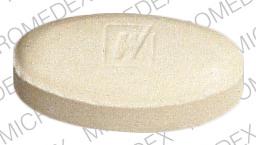Nalidixic Acid Dosage
Applies to the following strengths: 250 mg/5 mL; 250 mg; 500 mg; 1 g
Usual Adult Dose for:
Usual Pediatric Dose for:
Additional dosage information:
Usual Adult Dose for Urinary Tract Infection
Initial therapy: 1 g orally 4 times a day for 1 or 2 weeks
Prolonged therapy: May reduce to 2 g/day after initial therapy
Comments:
- Underdosing during initial therapy may lead to the emergence of bacterial resistance.
Use: For the treatment of urinary tract infections due to susceptible gram-negative microorganisms, including most Escherichia coli, Enterobacter species, Klebsiella pneumoniae, Morganella morganii, Proteus mirabilis, P vulgaris, Providencia rettgeri
Usual Pediatric Dose for Urinary Tract Infection
3 months to 12 years:
- Initial therapy: 55 mg/kg/day orally in 4 equally divided doses for 1 or 2 weeks
- Maximum adult dose: 4 g/day
- Prolonged therapy: May reduce to 33 mg/kg/day after initial therapy
- Maximum adult dose: 2 g/day
13 years or older:
- Initial therapy: 1 g orally 4 times a day for 1 or 2 weeks
- Prolonged therapy: May reduce to 2 g/day after initial therapy
Comments:
- Underdosing during initial therapy may lead to the emergence of bacterial resistance.
Use: For the treatment of urinary tract infections due to susceptible gram-negative microorganisms, including most E coli, Enterobacter species, K pneumoniae, M morganii, P mirabilis, P vulgaris, P rettgeri
Renal Dose Adjustments
CrCl greater than 20 mL/min: No adjustment recommended.
CrCl 20 mL/min or less: Dose should be halved.
Comments:
- This drug should be used with caution in patients with renal dysfunction.
Liver Dose Adjustments
Liver disease: Caution recommended.
Precautions
CONTRAINDICATIONS:
- Known hypersensitivity to the active component or to related compounds
- Infants younger than 3 months
- Porphyria
- History of convulsive disorders
- Coadministration with melphalan or other related cancer chemotherapeutic alkylating agents
Safety and efficacy have not been established in patients younger than 3 months.
Consult WARNINGS section for additional precautions.
Dialysis
Data not available
Other Comments
Administration advice:
- Perform disc susceptibility testing with the 30-mcg disc before using this drug, and during therapy if warranted by clinical response.
- May administer with or without meals
- Do not administer antacids (containing calcium, aluminum, magnesium), sucralfate, divalent or trivalent cations (e.g., iron), multivitamins containing zinc, or didanosine (chewable/buffered tablets) within 2 hours before or 2 hours after this drug.
Storage requirements:
- Store at room temperature, up to 30C (86F).
General:
- This drug should be used with caution in patients with epilepsy, severe cerebral arteriosclerosis, or glucose-6-phosphate dehydrogenase deficiency.
- To reduce the development of drug-resistant organisms and maintain effective therapy, antibiotics should be used only to treat or prevent infections proven or strongly suspected to be caused by susceptible bacteria.
- Culture and susceptibility information should be considered when selecting/modifying antibacterial therapy or, if no data are available, local epidemiology and susceptibility patterns may be considered when selecting empiric therapy.
- If clinical response is unsatisfactory or if relapse occurs, cultures and sensitivity tests should be repeated.
Monitoring:
- Hematologic: Blood counts (periodically if therapy exceeds 2 weeks)
- Hepatic: Liver function tests (periodically if therapy exceeds 2 weeks)
- Renal: Renal function (periodically if therapy exceeds 2 weeks)
Patient advice:
- Avoid missing doses and complete the entire course of therapy.
- Drink plenty of fluids.
- Stop this drug if tendon pain, inflammation, or rupture occurs; rest and do not exercise until diagnosis of tendinitis or tendon rupture excluded.
- Stop this drug and contact physician if symptoms of peripheral neuropathy (including pain, burning, tingling, numbness, weakness) develop.
- Consult physician at once if watery and bloody stools (with or without stomach cramps and fever) develop.
- Do not drive, operate machinery, or engage in other tasks that require mental alertness or coordination until you know how the drug affects you.
- Avoid excessive sunlight or artificial ultraviolet light during therapy; stop this drug if phototoxicity occurs.
More about nalidixic acid
- Check interactions
- Compare alternatives
- Reviews (3)
- Side effects
- During pregnancy
- Drug class: quinolones and fluoroquinolones
- Breastfeeding
Patient resources
Professional resources
Other brands
Related treatment guides
See also:
Further information
Always consult your healthcare provider to ensure the information displayed on this page applies to your personal circumstances.


